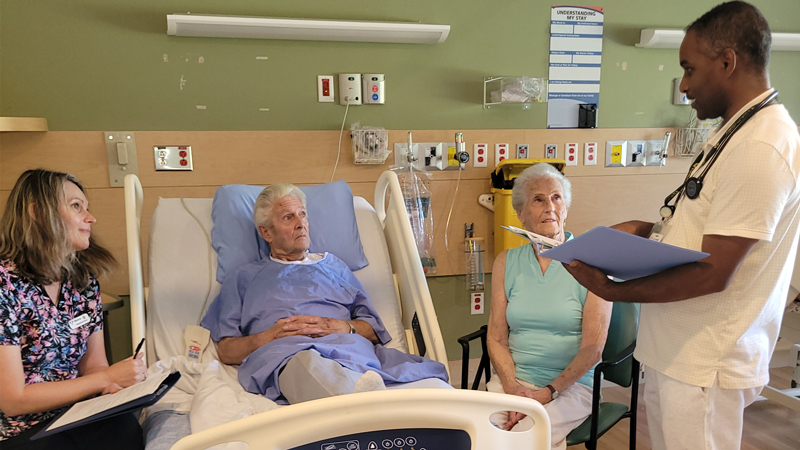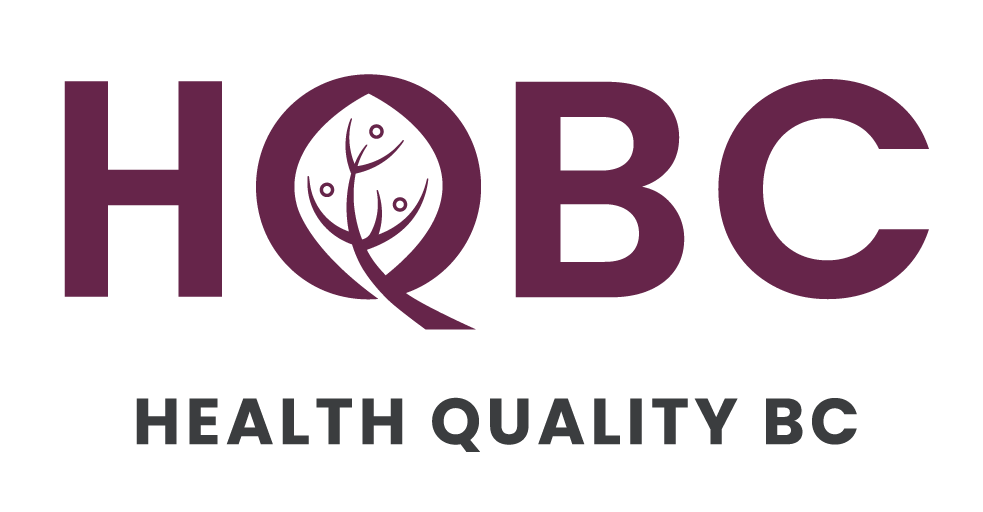The familiarity and comfort of home is often best when it comes to recovering after a hospital stay. Yet, for many, going home from hospital can also create feelings of unease.
What if I can’t remember which medications to take and when? What should I eat? How much activity can I do at home? And where can I find answers to my questions?

Fraser Health’s Regional Access and Flow Team recognized that some patients with congestive heart failure (CHF), chronic obstructive pulmonary disease (COPD), insulin-dependent diabetes mellitus, and pneumonia were staying in hospital longer than they needed to, either after being admitted or while still in the emergency department.
The team found that some patients were reluctant to be discharged or felt unsure after they got home – and some even found their way back to hospital and were readmitted. The reasons often came down to communication: either not enough information was shared with them and their caregivers about post-hospital care management, or they didn’t fully understand the information they did receive.
So, when Health Quality BC (HQBC) and Healthcare Excellence Canada (HEC) partnered to launch the Bridge-to-Home Collaborative for BC and Yukon, Fraser Health saw an opportunity to improve care transitions from hospital to home and community – and by so doing, improve their patients’ health outcomes.
“Participating in the Bridge-to-Home Collaborative has been a transformative experience, not only for us as care providers, but for our patients and their essential care partners as well,” says Harveer Sihota, Clinical Nurse Specialist with the Regional Access and Flow Team.
Bridge-to-Home is a quality improvement initiative that uses a suite of tools to help health care teams better engage with patients and care partners in discussions about hospital discharge, making them integral team members in their own care.
Through the year-long collaborative, which concluded in October 2023, Fraser Health used its participation in Bridge-to-Home to focus on improving the discharge experience of medicine patients admitted to Surrey Memorial Hospital by providing comprehensive discharge planning support, education and post-discharge follow-up.
The Regional Access and Flow Team was able to tailor the tools based on the needs of patients and care partners, and the needs of health care providers in both hospital and community. The former was key, because patients and their care partners are the only ones constantly present on every step of their health care journey. This means they bring an important perspective that is invaluable to designing a transition process that makes people more confident in managing care when they return home, helping avoid trips back to hospital and ultimately leading to better health outcomes.
“In Fraser Health, we took the standard set of Bridge-to-Home practices and further consulted patient partners, Indigenous leaders, a plain-language specialist, and frontline line staff to co-design a practical yet informative patient-oriented discharge summary that could be easily adapted for use in the new electronic documentation system that the health authority is implementing at all 12 hospitals,” says Harveer.
Fraser Health’s improvement project took aim at reducing patients’ length of stay in hospital by helping promote faster healing, improvements in patient and provider experience, and safer transition home with better long-term outcomes.
They trained 26 point-of-care providers on the initial unit regarding the new approach. They then spread it to three other medical units, training an additional 54 nurses. Currently, all nine medicine units at Surrey Memorial Hospital are using the patient-oriented discharge summary.
In the early testing process, approx. 60 patients and 50 essential care partners received a new patient-oriented discharge summary form, which was designed with patient partners’ input, and teach-back approach at discharge.
Pre- and post-implementation patient surveys were also employed – and the outcome results demonstrated that the Bridge-to-Home approach paid off. Of those patients surveyed, 74% said that they were as involved as they wanted to be in learning what to do after they left the hospital, an increase from 62% before the new approach and form were implemented.
In addition, 52% of patients, up from 43% before implementation, indicated that their care partner was included when they were given information about what to do after they left the hospital.
There was a significant increase after implementation in the percent of patients who said the instructions they received were easy to understand, including where to access more information (82%, up from 43%), how much activity they could do at home (64%, up from 19%), what changes needed to be made to their diet (78%, up from 33%), and what to do if they had concerns or questions (82%, up from 43%).
Staff also recognized the benefit of the Bridge-to-Home bundle, with 71% of providers surveyed saying that the new form and approach was valuable for patients and families.
“Transitions from hospital back to home can be challenging,” says Jennifer Zelmer, President and CEO of HEC. “Fraser Health’s Regional Access and Flow Team improved the quality and safety of these transitions for patients, essential care partners and providers at Surrey Memorial Hospital by tailoring tools, consulting partners and spreading a patient-oriented care transition bundle. It’s exciting to see the bundle’s rapid and successful adoption.”
The Regional Access and Flow Team is now spreading what they’ve learned and implemented throughout the organization through their own One Day Counts internal collaborative on all medical units through the Fraser Health region.
Read more about how the Regional Access and Flow Team used Bridge-to-Home to address patient flow challenges in Fraser Health’s One Day Counts Regional Collaborative:
- Building For Success After Hospital: How Patient-Oriented Discharge Summaries Help Patients and Their Families Confidently Manage Post-Hospital Care

